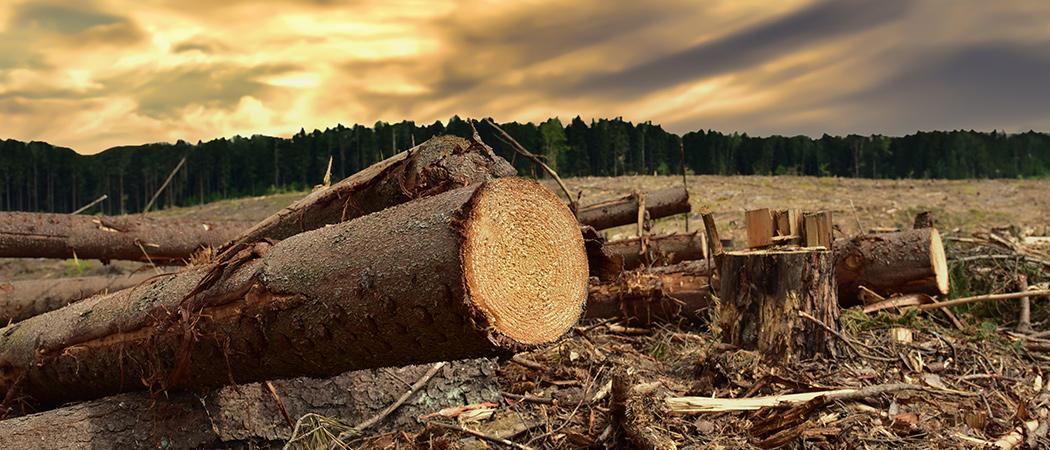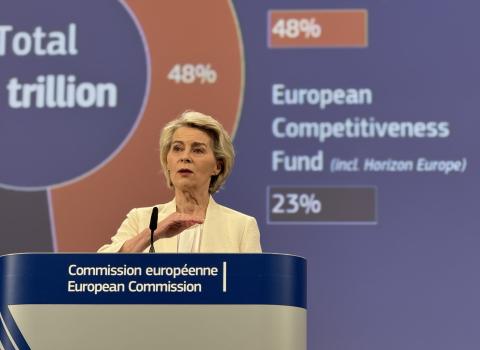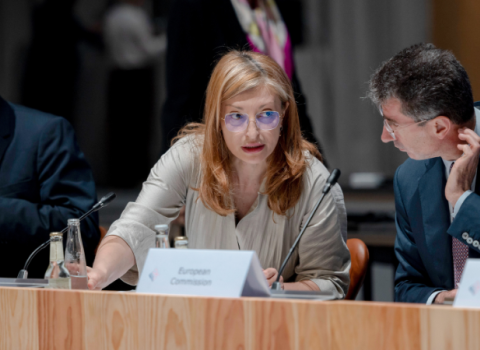Better translation of EU-funded research and improved understanding of what is happening on the ground are needed to bridge between exploitation and conservation and improve forest management across Europe

The EU’s forests would benefit from better knowledge translation and closer links between wood production and biodiversity research and innovation.
“The challenge is bringing down the knowledge and understanding at European level to more regional decision making,” said Marcus Lindner, principle scientist for the resilience programme at the EU’s European Forest Institute (EFI).
Forests cover around 40% of EU land. They prevent soil erosion, purify the air, filter water, prevent erosion, and absorb carbon dioxide. They are also important economic resources. Each member state takes care of its forests, but the EU sets out general principles for managing them.
Lindner has worked on many EFI projects, generating knowledge and attempting to plug it in to improve the situation on the ground. One such project, Motive, found there are European level networks of the scientists who carry out forestry research, but none connecting the practitioners who apply it.
The barrier to facilitating this exchange is that is national funding agencies don’t want to give money outside their countries. “There’s a strong bias towards local solutions,” said Lindner.
Industry echoes the concerns about knowledge translation. When it comes to R&D, the EU forest strategy “does not recognise the realities on the ground,” said Johan Elvnert, managing director of the Forest-based Sector Technology Platform, a pan-European network of experts that aim to bring national innovation priorities to the EU level.
Speaking one language
In July the Commission presented a new strategy, aiming to make forest management more sustainable while boosting the forest-based bio-economy. It aims to bring different regional practices and policies under one umbrella.
But doubts remain whether this is the right approach. “We would say that it seems they want to have an EU blanket, one size fits everything, but the forests really depend on where you are. It’s very much a local economy,” said Elvnert. Regional logistics, traditions, legislation and support dictate how forests are managed.
Eeva Primmer, research director at SYKE, the Finnish Environment Institute, says that while standardising practices and approaches across the EU is impossible, joint principles under the strategy can facilitate exchange. “Globally, the EU is the forerunner of thinking of sustainability in a holistic way. It brings holistic issues to the fore and it does this also through research,” she told Science|Business.
Primmer says the strategy is “wonderful” in the way it balances forest resilience with wood production. But in the end, it is a compromise between biodiversity and wood production. “It covers the broad range of sustainability issues well, but it is very complicated and doesn’t have terribly clear policy messages. This is because the negotiation leading to the strategy has been super difficult. As a strategy, it’s complicated and too fragmented,” said Primmer.
On the ground, links between science and policy are generally well developed, and in regions, professionals often shift from research to administration. In the end, “it’s a matter of extending this to more complex issues,” Primmer said.
One example is wildfires. Today, helicopters are sent out to put them out. But Lindner says this is a useless and expensive practice, and instead more money should be invested in prevention.
“We have to invest in more pro-active ways of managing our forests to better cope with disturbances by preventing future risks,” said Lindner. There should also be measures to help firefighters position themselves better in a forest in the case of a fire.
EFI’s latest project RESONATE is looking for ways to make forests more resilient, but Lindner says more has to be done. “This is somewhere where research needs to move ahead. This can then complement the local support,” he told Science|Business.
Industry demands
The Forest-based Sector Technology Platform was set up by the Commission in 2005, to bring together industry to put forward recommendations for forestry research at EU level.
“The Commission said if the sector comes together and agrees on a long term mission and strategy that includes R&I, they would support with funding,” said Johan. “The way we work is we gather input from around Europe and we put it together.”
The platform’s latest agenda covers the decade leading up to 2030. It has ten targets ranging from boosting resilience to climate change, to developing renewable building materials.
But while the plan is there, industry finds it difficult to deliver with the allocated budget.
“We have suggested many activities that we really believe could have an impact on all aspects of sustainability, including climate change and climate preparedness. But the response in terms of funding is quite frugal,” said Johan. “If now there is so much attention put on the role of forests, then the question is, what is the carrot?”
For Primmer, a more holistic approach to forest research in needed. There are two main pillars: the science that deals with the use of forests as a resource, and the science of biodiversity and conservation. They’re not mutually exclusive and depend on each other, but research is needed to bridge between the two and bring that integrated understanding to governance and policy.
While the two may be related, at policy level there are few links between making the forests healthy and exploiting their resources. “When it filters to forest policy, the polarisation is very strong,” said Primmer.
“When we talk about trees and ecosystems, it’s always people and organisations that are managing them. They are participating in governance. Policy is all about people and organisations. It’s not enough that we analyse the species, the landscape and the cubic metres. We need to understand the human-forest interface,” she told Science|Business.





 A unique international forum for public research organisations and companies to connect their external engagement with strategic interests around their R&D system.
A unique international forum for public research organisations and companies to connect their external engagement with strategic interests around their R&D system.